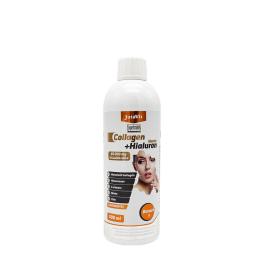Hyaluronic acid is one of the proteoglycans that perform important functions in our body.
The proteoglycans are located in the space between cells, this space is called the extracellular matrix - think of it as the gap between bricks, it fills the space between cells. Proteoglycans are responsible for the water supply of the intercellular space by attracting water molecules due to their negative charge, and consequently they also attract positively charged minerals (sodium, potassium, calcium), as these minerals are needed for cell communication and therefore play an important role in intercellular signalling.
Hyaluronic acid therefore helps to protect joints, ligaments and skeleton by moistening the fluid in the joints. This fluid is essential for the two bones to slide frictionlessly together. This is why the cartilage is filled with hyaluronan injections.
It also plays a major role in skin care. Youthful skin, plump, firm and supple, all thanks to its water content. Ageing and daily damage cause the skin to lose water. Hyaluronic acid can restore skin firmness by hydrating the skin. That's why hyaluronic wrinkle fillers are available.
Studies have confirmed that, in addition to injections, taking hyaluronic acid as a nutrient supplement can protect cartilage, reduce the chance of developing arthritis and firm and rejuvenate the skin.
Hyaluronic acid is also thought to have anti-infective properties, in that the space between cells has a protective hyaluronic membrane that protects against a group of bacterial infections that most commonly attack the skin.
Because of its moisturising and anti-infective properties, it is a popular ingredient in many beauty products and joint protection.
Studies have used 120-240 mg of oral hyaluronic acid to achieve optimal effects. Even at such low doses, it can work well, so even glucosamine and chondroitin are less likely to cause side effects.








































